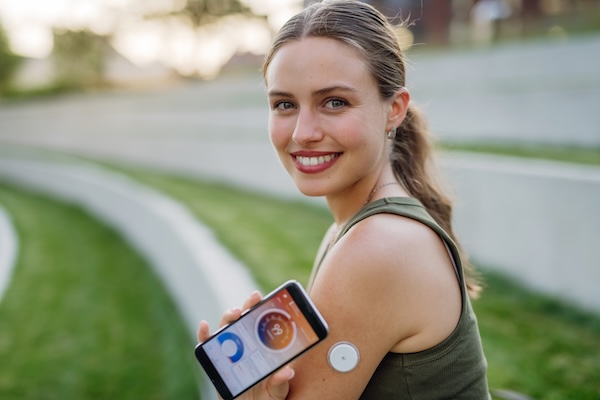 We at Biohackr Health are fans of glucose monitoring. Even for those who are not diabetic, the studies are quite compelling that every person is different in how their body responds to food, simple changes in how you eat and exercise can have great effects, and THOSE WHO DO CONTINUOUS GLUCOSE MONITORS CHANGE THEIR HABITS and show benefits. This can be eating differently, or going for a walk after eating because you can see your sugar level going up.
We at Biohackr Health are fans of glucose monitoring. Even for those who are not diabetic, the studies are quite compelling that every person is different in how their body responds to food, simple changes in how you eat and exercise can have great effects, and THOSE WHO DO CONTINUOUS GLUCOSE MONITORS CHANGE THEIR HABITS and show benefits. This can be eating differently, or going for a walk after eating because you can see your sugar level going up.
One of the big areas people advocate for in the CGM (continuous glucose monitoring) world is to FLATTEN THE CURVE of your sugar spiking after eating. The reason we like our patients to do CGMs is that there is overwhelming data that if you know what your triggers are, you change your behaviors. So what does flattening the curve do?
AIDS WEIGHT LOSS.
- Study of 40 young adults over 8 week timeframe (Chekima, 2022) showed those who have access to CGM data improved BMI, fat mass, fasting plasma glucose, HbA1c, total cholesterol, HDL, LDL more than those who did not use a CGM.
- Study of 122 overweight adn obese adults in a 6 month randomized controlled trial GLYNDIET study showed a low glycemic index and energy restricted diet was more effective than a high glycemic index and low fat diet to reduce body weight and control glucose and insulin levels. Results were not seen between the two groups until after 12 weeks.
- Study 120 patients who were healthy but overweight. They looked at low carb vs low fat diet over a 24 week period. Low carb group lost 12 kg, twice as much as the low fat group.
- Meta analysis study, looked at 13 randomized controlled studies of 1415 patients total. Low carb vs low fat diet. Individuals assigned to the low carb diet got significantly greater weight loss, with one year or longer follow up.
REDUCES HUNGER.
- 2017 study (Chang) showed glycemic load stimulates hunger.
- 2021 study (Wyatt) showed the size of the dip in blood sugar after eating predicts the degree of hunger and the number of subsequent calories consumed.
IMPROVES MENTAL HEALTH.
- Study 82 patients. Breymeyer 2016. Showed eating high glycemic load diet had a 28% higher score for depression symptoms, and 55% higher score for mood disturbance, and 26% higher score for fatigue and inertia.
- Study 24 young men. Strang 2017. Looked at macronutrient composition, with breakfasts with a high carb to protein ratio (80% carbs, 20% protein) vs. lower carb/protein ration (50% carb, 25% protein). This change modified endocrine signals.
- Study of 3307 patients over decades Bancks. 2018. Showed those who had bigger glycemic swings as young adults had worse mental processing speed, memory, and language fluence in middle age INDEPENDENT of fasting glucose levels. This means having spikes and dips is bad. This was also seen in other studies.
- Study of 40 adults 49-70 Nilsson 2009. Those who ate a low glycemic index breakfast did better in cognitive tests.
IMPROVED SLEEP QUALITY.
- 10 studies. Found significant effect of high glycemic index on sleep, with improved sleep duration or quality. Three studies in young males did not show a significant effect. One study was in postmenopausal women.
- Study 104 adults without diabetes. Sleep duration was negatively correlated with blood glucose levels. Diet high in sugar, carbs, and refined grains associated with higher rates on insomnia.
- Another study Tsereteli 2021 showed poor sleep and later bedtime was associated with higher glucose spikes with breakfast the next morning.